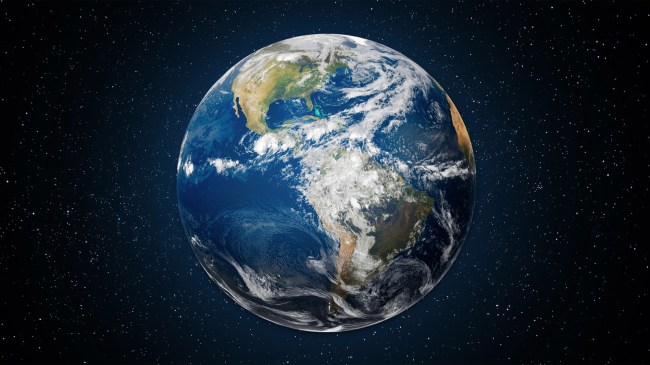iStockphoto
Billions of years ago, Theia, a planet approximately the size of Mars, collided with Earth and its remains are believed to have slowly sunk into the mantle, surrounding the Earth’s core.
“The impact between Earth and Theia may have literally left a big mark on our planet,” Dr. Alfredo Carpineti of IFLScience writes. “There are two peculiar structures buried deep in the mantle, surrounding the Earth’s core. They are known as Large Low-Velocity Provinces (LLVPs). These anomalous formations are located beneath the African Tectonic plate and the Pacific tectonic plate. They are believed to have sunk as they are denser than the surrounding mantle material.”
This impact between Earth and Theia is believed to be the same one that created our Moon.
A recent study led by Caltech researchers took a look at these LLVPs by measuring seismic waves traveling through the Earth.
“In the deepest mantle, the seismic wave pattern is dominated by the signatures of two large structures near the Earth’s core that researchers believe possess an unusually high level of iron,” the researchers wrote. “This high iron content means the regions are denser than their surroundings, causing seismic waves passing through them to slow down and leading to the name ‘large low velocity provinces.’”
The researchers used ran several different simulations and “confirmed that the physics of the collision could have led to the formation of both the LLVPs and the Moon.”
“The researchers’ simulations showed that much of the energy delivered by Theia’s impact remained in the upper half of the mantle, leaving Earth’s lower mantle cooler than estimated by earlier, lower-resolution impact models,” the researchers wrote. “Because the lower mantle was not totally melted by the impact, the blobs of iron-rich material from Theia stayed largely intact as they sifted down to the base of the mantle, like the colored masses of paraffin wax in a turned-off lava lamp.”
“A logical consequence of the idea that the LLVPs are remnants of Theia is that they are very ancient,” said Dr. Paul Asimow. “It makes sense, therefore, to investigate next what consequences they had for Earth’s earliest evolution, such as the onset of subduction before conditions were suitable for modern-style plate tectonics, the formation of the first continents, and the origin of the very oldest surviving terrestrial minerals.”

